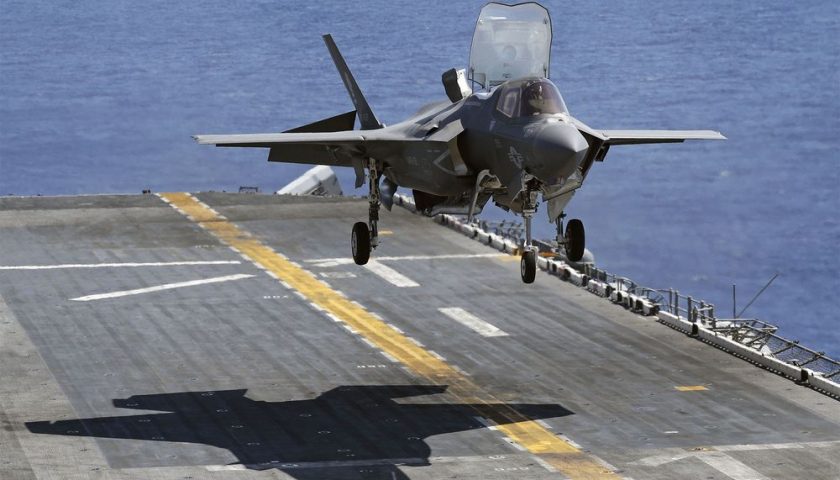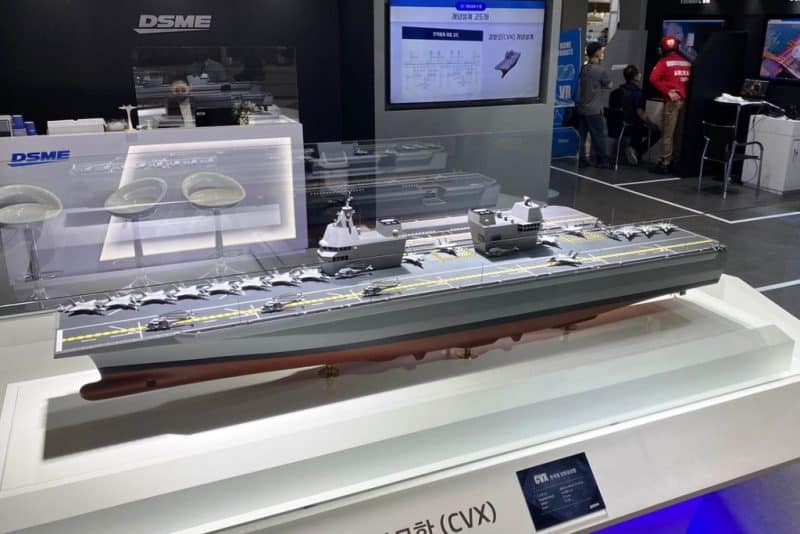At the start of the 2000s, the South Korean defense industry was still in its infancy, even if it had already designed certain armored vehicles such as the K1 heavy tank, the K200 armored fighting vehicle and the Donghae light corvettes. Since then, relying on significant technology transfers linked to its acquisition and local manufacturing programs, but also on the global immobility of Western arms manufacturers between the end of the Cold War and the mid-2010s, Seoul rose to the podium of designers and producers of advanced military equipment, as in the field of land combat with a family of heavy tracked armored vehicles ranging from the K2 Black tank Panther to the AS21 Redback infantry fighting vehicle, in the naval field of the AIP submarine Dosan Ahn Chango to the heavy destroyer Sejong the Great, in the missilery of the medium-change ballistic missile Hyunmoo 4-4 to the anti-ballistic missile L- SAM, and in combat aviation with the FA-50 training and attack aircraft and the new KF-21 Boramae medium fighter, and is now positioned as a formidable competitor, particularly for European manufacturers, in very many areas and including as far as Europe.
Today, with 22 conventionally powered or AIP attack submarines, 13 destroyers and frigates, 21 corvettes as well as 2 amphibious helicopter carriers and 8 large landing ships, the South Korean navy has become not only the one of the most imposing in the Pacific theater, but also one of the most powerfully armed, the 3 destroyers of the Sejong le Grand class, with 128 vertical silos, second only to the Kirov class cruisers in this area, for example. But there is a program that is causing a lot of controversy in the country, the one aimed at providing the South Korean Navy with one or more aircraft carriers or aircraft carriers, capable of implementing combat aircraft.
It is true that this program, which has not yet been formally started, has seen many twists and turns since it was first mentioned by the South Korean general staff. in July 2019 in the form of two 30.000 ton assault helicopter carriers derived from the Doko class, intended to implement the 20 F-35B with vertical or short take-off and landing that the Air Force had yet to order. It was then, for Seoul, to respond to the next entry into service of the second Chinese aircraft carrier, the Shandong, launched in April 2017, and which joined the active service within the Navy of the PLA in December 2019. .

The hypothesis adopted by Seoul was then very inspired by the conversion of the two Izumo-class helicopter carriers of the Japanese naval self-defense forces announced a few weeks earlier, again to implement the fleet of around forty F -35B ordered by Tokyo, both to respond to the Chinese threat and to appease a Donald Trump who is very insistent on balancing the American trade balance with Japan.
Soon, however, the program grew, and in October 2019, there was already no question of 30.000 ton ships, but of two options, one of 41.000 tons for 238 meters designated light aircraft carrier, and the other of 71.000 tons for 298 designated medium aircraft carrier. In both cases, these were ships equipped with a springboard and without catapults or arresters, like the British, Italian, Spanish or even Japanese aircraft carriers, intended to implement helicopters and aircraft with vertical landing and short takeoff, such as the Harrier or the Lightening II. One year later, in August 2020, the South Korean aircraft carrier model was only 40.000 tons loaded, and had lost its springboard for a configuration close to the US Navy's America-class LHAs.

The rest of this article is for subscribers only
The Classic subscriptions provide access to
all articles without advertising, starting at € 1,99.
Newsletter subscription
Register for the Meta-Defense Newsletter to receive the
latest fashion articles daily or weekly


It's interesting to be reactive and reflect on “fresh news”, but I find that the editorial line lacks consistency. It evolves for example on the subject of light fighters, once considered interesting, then condemned a little later. (while having an inexpensive light fighter for training, operational permanence, prepositioning outside metropolitan France or low-intensity operations makes it possible to concentrate high-performance means where they are really needed). The same here for aircraft carriers: one day we support the nuclear PA, to consider a little later that the Korean project (all theoretical to date) would be more suitable, only on the basis of very partial criteria related to export. The article demonstrates above all that the Koreans do not know what they want, even if they have become a competitive player in the arms market.
The goal is not to deliver “truths”, but to submit reasoning, this explains that depending on the subject, it is possible to arrive at different conclusions because the paradigms taken into consideration are different. It's up to everyone to find the tools to form their own opinion.
Is the light fighter doomed? This is possible, because we are actually seeing a shift towards heavier equipment in acquisitions. However, would there be any interest in developing a successor to the 2000? very probable. But it will certainly be heavier than the 2000… Question of perspective.
Ditto for aircraft carriers. Should we keep the PANG program? yes, it is undeniable. Should it be kept in its current form? it is much more debatable. Again, it all depends on the question being asked.
[…] c 128 vertical silos, yielding for example only to Kirov-class cruisers in this area. But there is a program that is causing a lot of controversy in the country, […]
It is crucial to develop and produce for ourselves the armaments necessary for our defense. It's a pity that we don't have a combat tank production capacity in operation, for example.
To have the necessary mass, industry needs exports. However, the needs for Europe are great enough to mass-produce weapons and essential weapon systems.
The French people and the European peoples do not seem aware of the economic and military issues, crucial for our survival. Are our political leaders like our elected representatives, driven by short-term electoral considerations, more so?
The war started by Russia opened our eyes to the dangers of the world. Europe being what it is, France must first rely on itself in all key areas. It must redouble its efforts, by offering each European country to participate in this effort in the common interest.
Is France doing enough to tirelessly convince each state, member or not of the EU, of the programs to be carried out, and to arouse the interest of the states to work with us in an efficient, open and respectful way of the common interest?
To convince, he inspires confidence. With 200 tanks and a hundred 155 mm tubes, we don't inspire anyone.
[…] […]